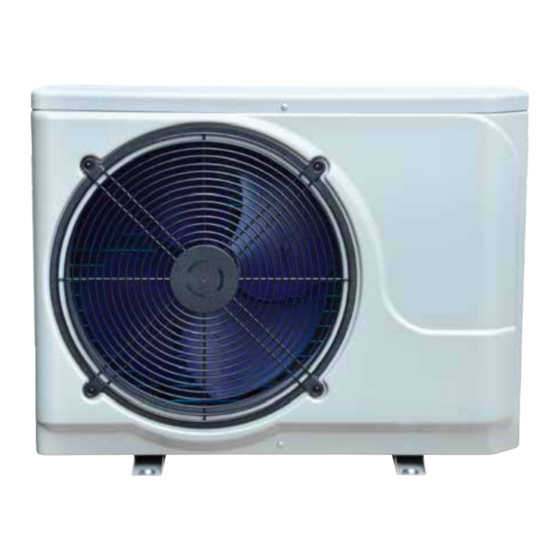GALAXY SPAS PH-020/R1U Książka techniczna - Strona 9
Przeglądaj online lub pobierz pdf Książka techniczna dla Pompa ciepła GALAXY SPAS PH-020/R1U. GALAXY SPAS PH-020/R1U 12 stron.

Installation
Precautions
• Avoid locating the unit close to bedrooms or other noise sensitive areas.
• Avoid a location which could create vibration (e.g. secured to a solid wall).
• The fan should not blow towards windows, walls or spaces likely to be inhabited by people or animals.
• Do not install where the Heat pump is likely to be subjected to polluted air, dust or debris, etc.
• Avoid directing fan output against the dominant wind directions.
• Protect the heat pump from possible snow fall.
• Minimise exposure to environmental conditions as much as possible and never block the airflow.
Securing the Heat pump
The Heat pump should be securely fixed. The four included rubber mounts should be installed to absorb
high-frequency vibrations.
Piping
A bypass, consisting of three valves, must be installed to adjust water flow to the Heat pump and to isolate the
apparatus for maintenance purpose.
For a more stable flow in the heat exchanger, it is recommended to install the Heat pump on the pressure side of the
main pump.
output valve
water out
bypass valve
input valve
water in
Heat pump
communication port RS485
Power
spa circulation/
spa control
main pump
In order to limit the heat loss from the piping,
it is recommended to install the heat pump as close
as possible to the spa. A 16 foot (5 m) cord is provided.
spa equipment bay
If your installation is equipped with a water treatment system (chlorine, bromine, salt, etc.) the bypass must be installed
before the water treatment, with a check valve between the bypass and water treatment system.
Condensation
The air drawn into the Heat pump is strongly cooled by the operation of the Heat pump for heating the spa water, which
maycause condensation on the fins of the evaporator. The amount of water may be as much as several liters per hour
at high relative humidity. This is sometimes mistakenly regarded as a water leak.
Since water generated by condensation will be evacuated at the bottom of the Heat pump, it is better to provide a slight
rearward slope when installing the Heat pump to allow this water to flow freely on the ground. It must also be ensured
that this evacuation of water will not affect any components around the Heat pump like electrical circuit and material like
wood ormetal that can be weakened by water That said, be aware that water will flow under the Heat pump in normal
operation.
8
